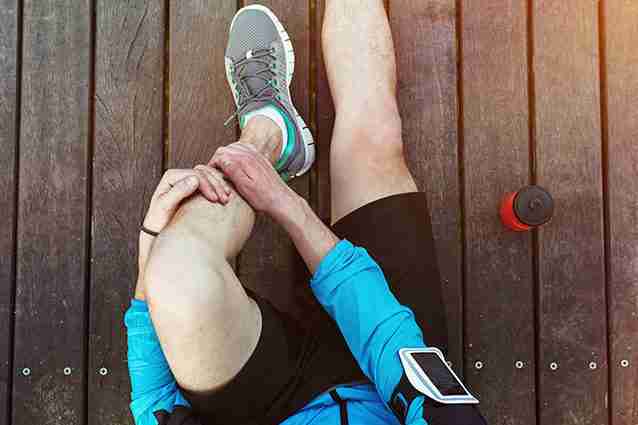Table of Contents
The scenario is all too familiar – one day you’re playing golf, running and enjoying life, then one awkward twist and your knee is swollen, painful and stops you doing everything you love.
What you hear
You get your MRI results back, and the doom-and-gloom begins:
“It’s bone on bone”
“You’ve got advanced arthritis”
“Your cartilage is severely worn”
“YOU NEED A KNEE REPLACEMENT!”
What the report says
Looking at the scan, you can see all the nastiness. And the report sounds just as bad:
- “Subchondral cyst formation”
- “Marginal osteophytes”
- “Grade 3-4 cartilage loss”
- “Loss of joint space”
- “Large knee effusion”

The common sense approach
The list is long and ugly. But here’s the thing – your knee would have looked like that 12 months ago, long before your pain arrived. And if you weren’t lining up for knee surgery then, what’s changed?
Despite all the horrible sounding findings on your MRI, the only finding that actually changed after that twisting incident is the “knee effusion”, a medical term for swelling inside the knee joint.
But it’s the (reversible) chain of events that occur with knee swelling that create the cycle of pain and dysfunction.
Does “subchondral cysts” mean that I need a knee replacement?
Think of your knee surface like a road – over time is gets a few pot-holes and roughened sections (aka. “cartilage loss” or “cartilage defects”). These sections are lacking the harder road surface, exposing the softer bits under the road. But it’s still resilient enough to handle the odd bump from a car tyre (aka. joint loading). But then you add buckets of water (aka. “knee effusion”) and problems arise.
The swelling is like putting water in the pot-hole – it softens the material under the road, making it more vulnerable to pressure. So when a car runs over it, it breaks up more of the material and causes more swelling/water. And with more water, you don’t even need a car to add load – the water itself forces its way into the subsurface, causing even deeper holes (aka. “subchondral cysts” or “subchondral pitting”).
Effective treatment options
So based on that analogy, you COULD go and resurface the whole road. Or you could just get rid of the water and stop the cars driving over the pot-holes.
To get rid of the water (knee swelling), we use a combination of approaches – avoid the activities that cause the water and take meds if possible to limit the amount of water that happens after activity. You can also use ice packs and a knee brace.
To stop the cars (joint loading) from hitting the pot-holes, you need to improve the controllers of the car’s movement – your muscles. Stronger and better trained muscles can steer the cars down the middle of the road, where the road is designed to take the traffic, and keep them away from the rough bits around the edges. The trick to designing an effective strength program is that it has to build you up and make your knee more tolerate of load, but without stirring up your current trouble. Too mild and it won’t be effective, too aggressive and there will be too many set-backs to maintain consistent improvements.
Now I’m not saying that some roads don’t need resurfacing. There are roads that have been breaking down for a very long period of time and limiting your lifestyle, both with pain and a lack of function. But if your road has only been causing pain for a short period of time, it’s highly likely that the right combination of approaches will get you back on track and doing what you love sooner than you think.
Written by
Pete Colagiuri
Sports Physiotherapist
Pete has over 20 years experience as a Physiotherapist and specialises in running biomechanics and complex injuries. He believes that you must identify and fix the underlying cause of an injury, to recover faster, prevent recurrences and improve performance.


